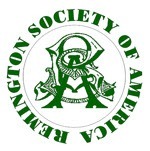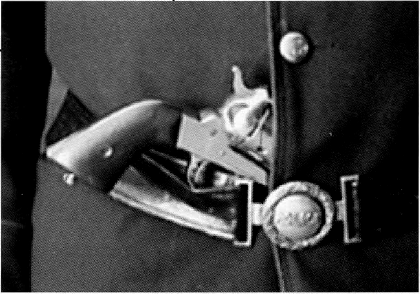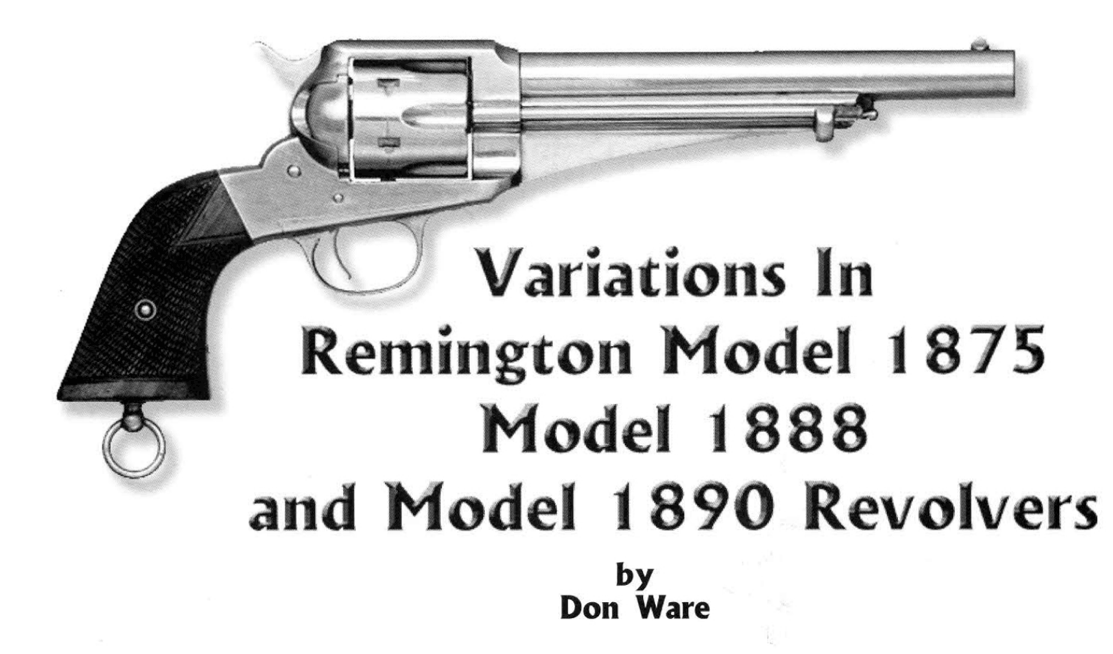
|
The Remington Model 1875 Revolver
The large frame cartridge revolvers that were An E. Remington & Sons’ broadside from 1876 introduced the revolver as “The Remington No. 3 Revolver, Model 1875”. The No. 3 designation obviously referred to the revolver’s predecessors: the Army percussion revolver as No.1; and the .46 caliber cartridge alterations as the No. 2. This same broadside also proudly declared:
Remington used several names for this model
|
In the 1885-87 catalogs the name changed again to
On a lighter note, I would like to point out that
The 10,000 revolvers alluded to in the 1876
The British association with these revolvers came
The Model 1875s were produced for only 12 years, |
| Page 14 | 1st Quarter 2004 |
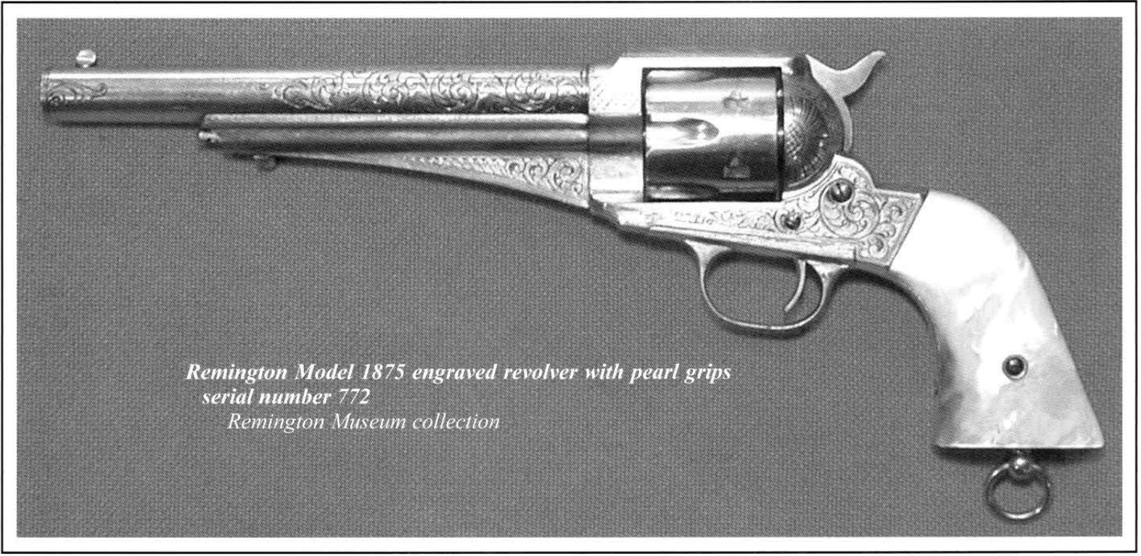
|
The Model 1875 revolver was originally produced in one |
Very late in production, the revolver was
Most published reports estimate a total production 0f |
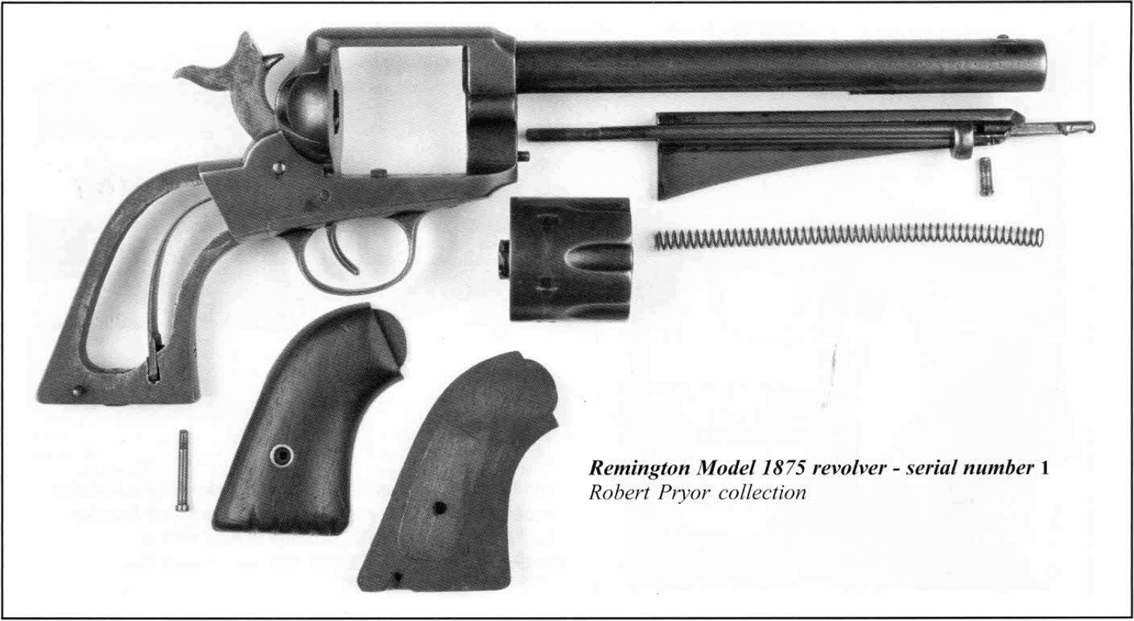
| Page 15 | 1st Quarter 2004 |
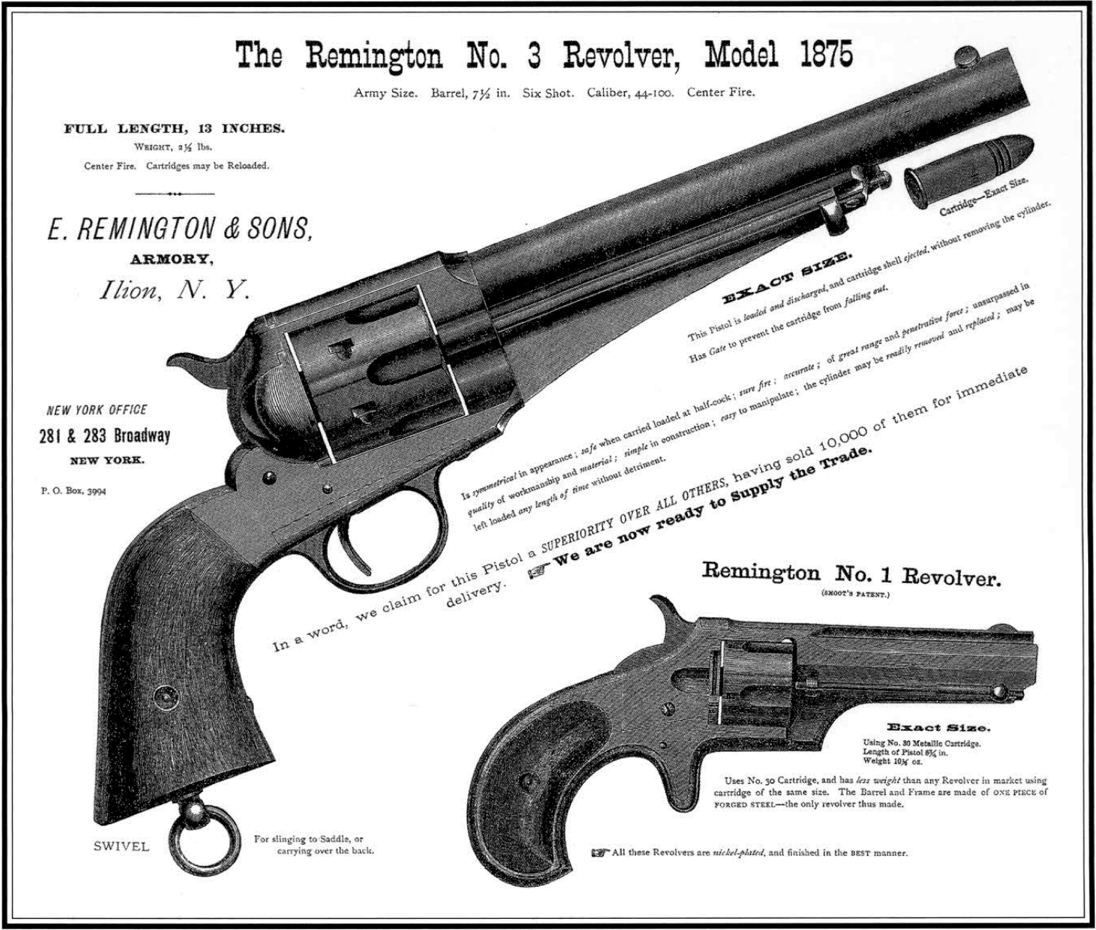
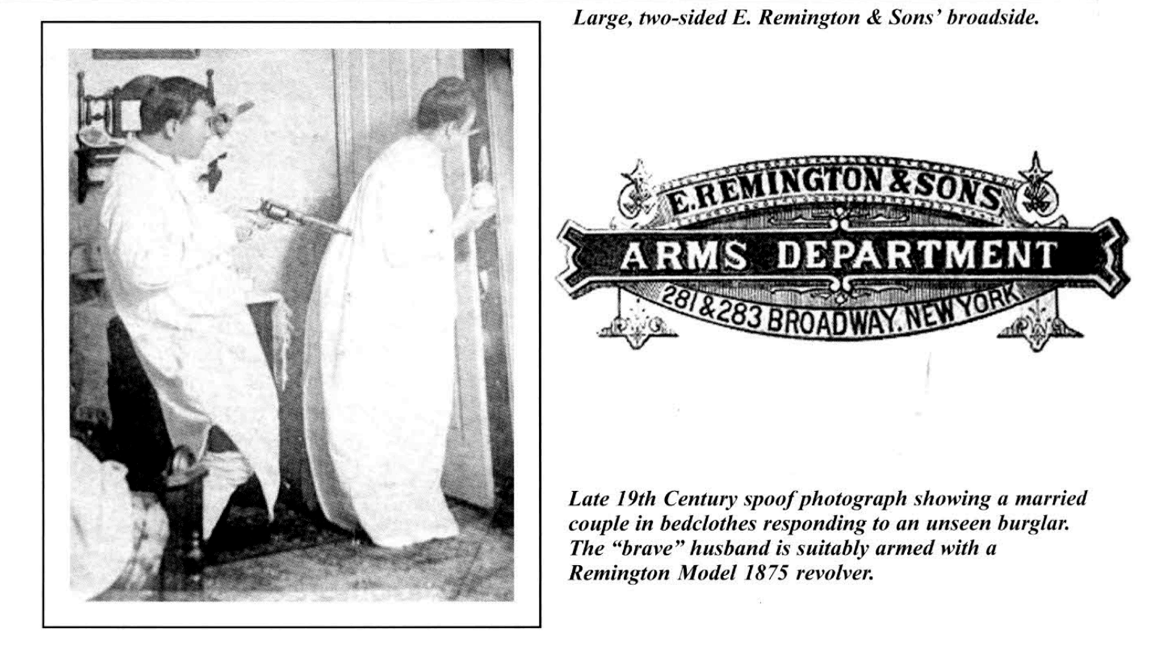
| Page 16 | 1st Quarter 2004 |
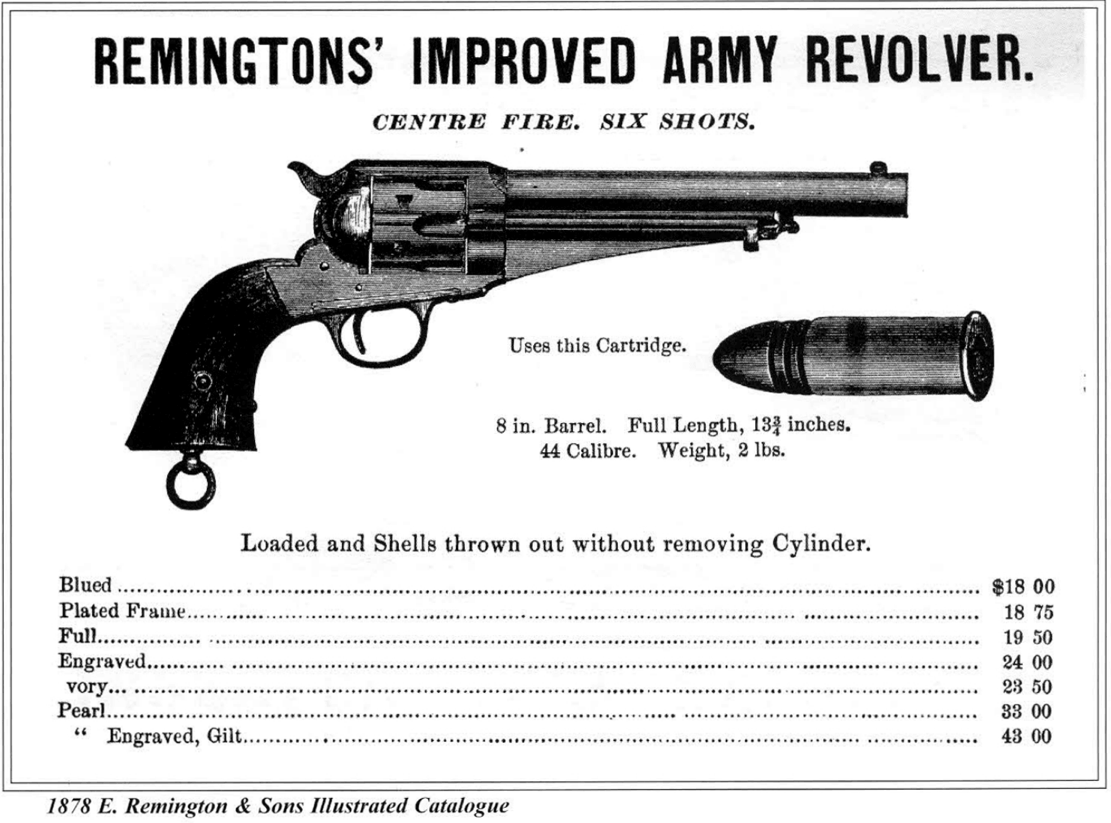
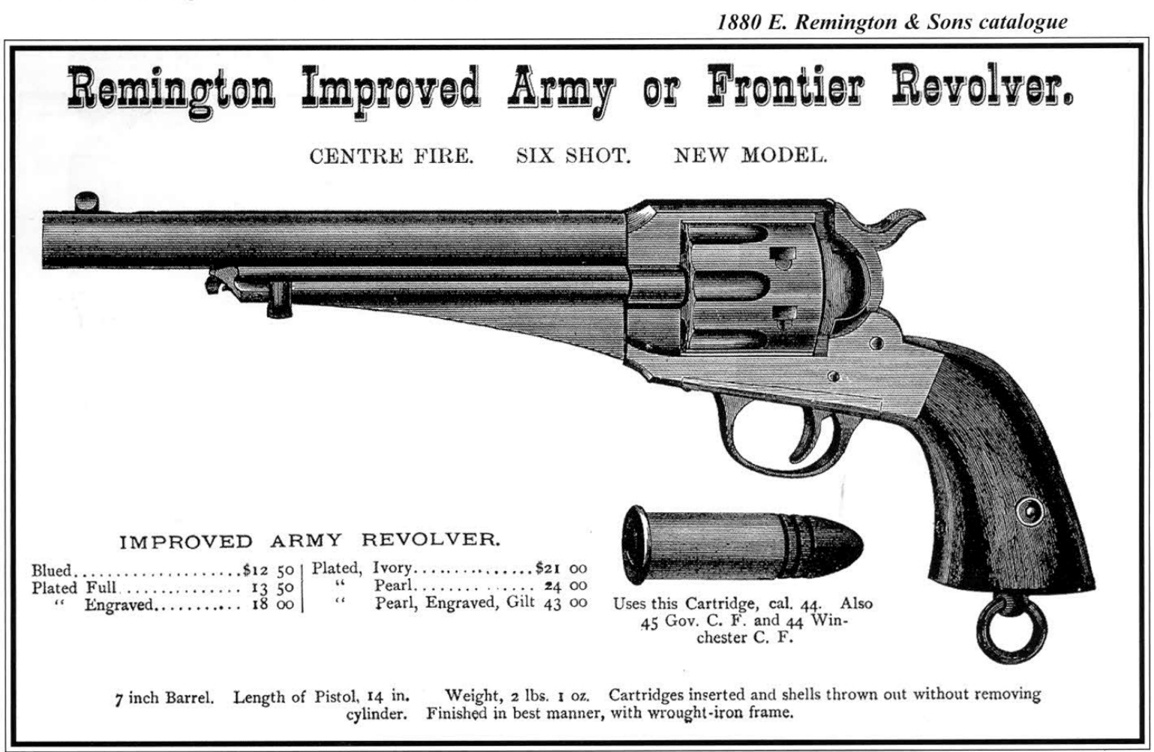
| Page 17 | 1st Quarter 2004 |
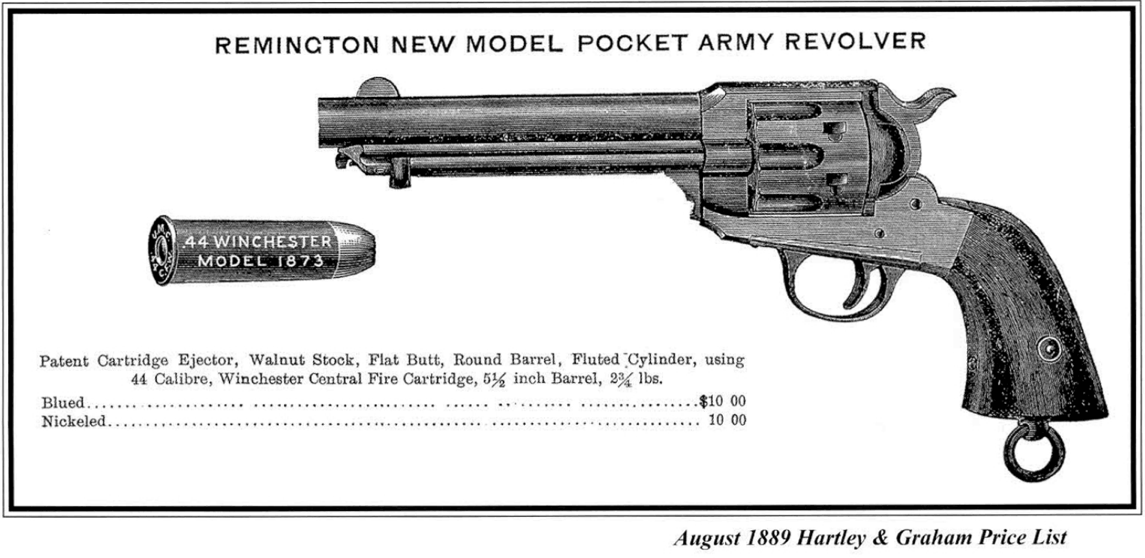
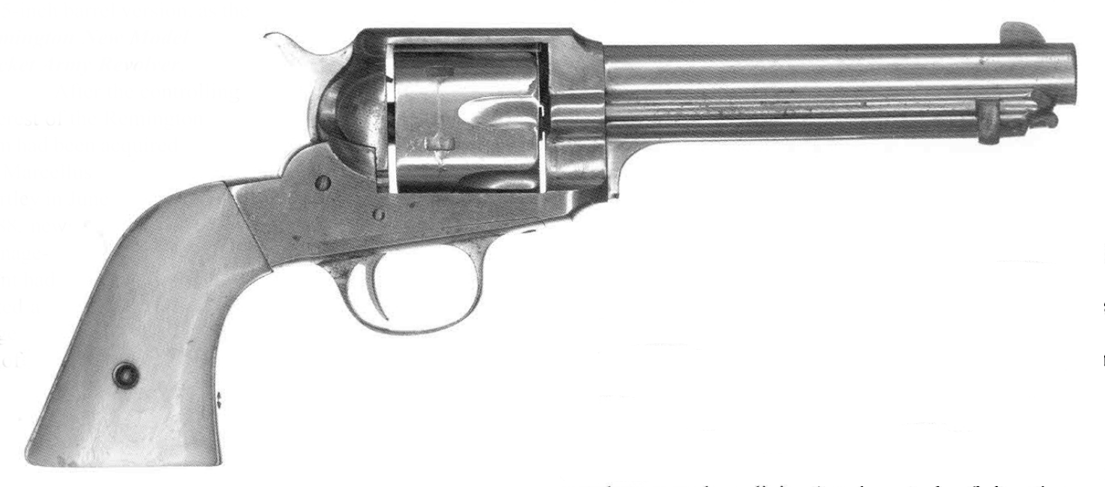
|
Until the last decade, this model was a stepchild in
After the controlling interest of the Remington
A new revolver was designed, and the old stock of |
The reason l state that some of these revolvers
An estimate of total production would only be |
| Page 18 | 1st Quarter 2004 |
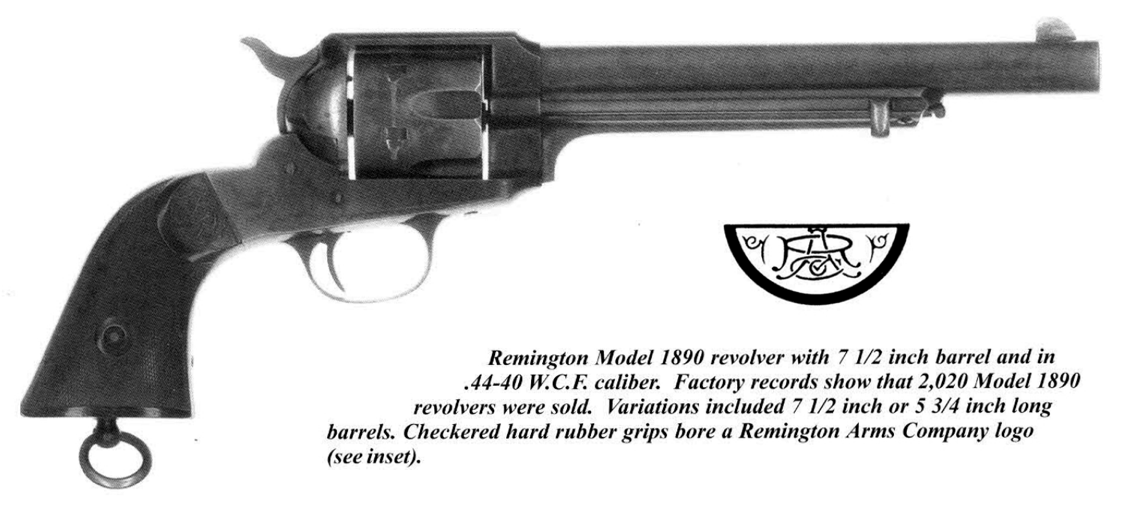
The Remington Model 1890 Revolver
|
Mechanically, the Model 1890 revolvers are identical to the Model l888s. There was a different barrel address which reflected new ownership of the Remington firm: “Remington Arms Co. llion , N. Y.” This new model was also offered in two barrel lengths, 7 and 5 inches. Another departure was the use of molded hard rubber for the grips. These were checkered and had a Remington Arms Company logo at the top.
This model was available in one caliber only, the .44-40 Winchester
Sales of the new Model 1890 revolver must have been disappointing, as |
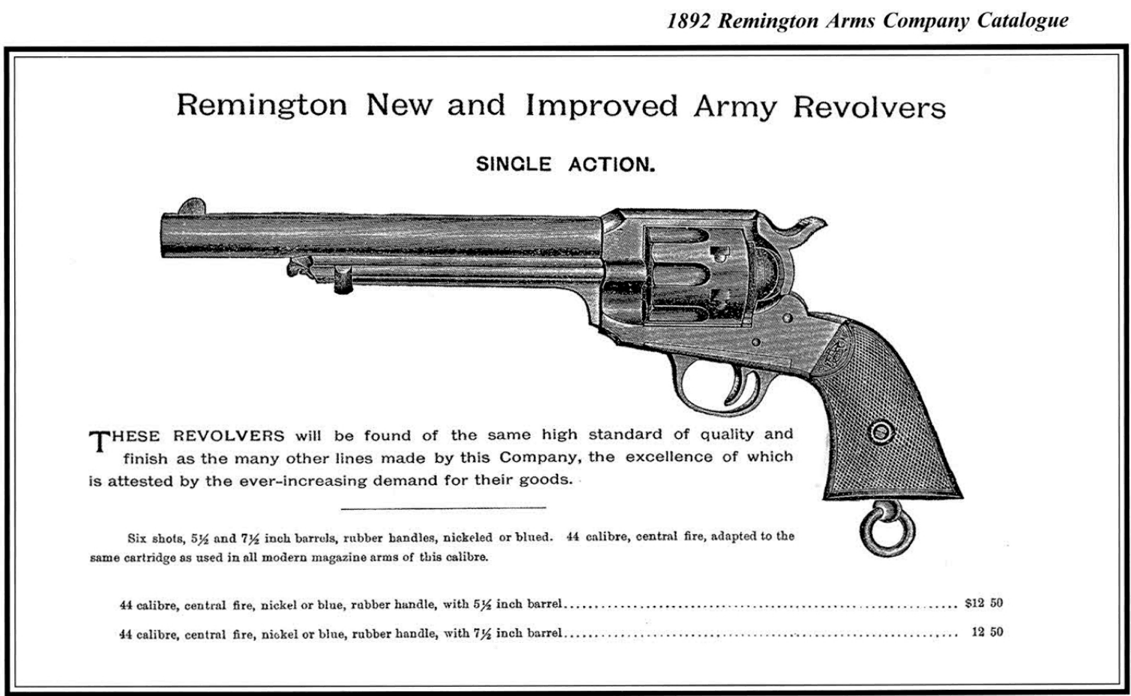
| Page 19 | 1st Quarter 2004 |
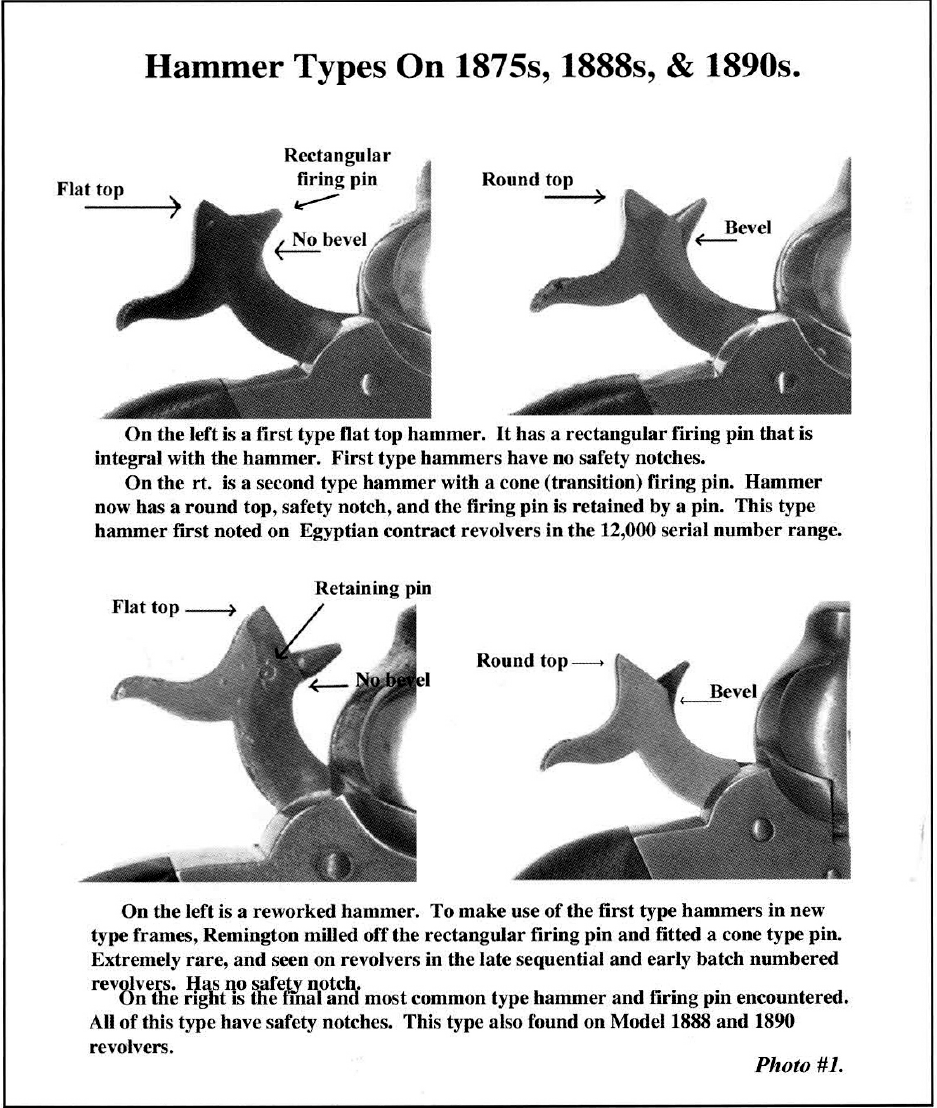
|
The Variations
Photographs #l through #5 depict variations that
Most of the photos have captions that explain the
Photo #l has three hammer types and three firing |
detonating primers. The lack of a safety notch on the early hammers was also a serious safety concern. The first hammer and firing pin changes occurred during the Egyptian contract deliveries, so these may have been responses to the inspector’s complaints Photo #2 has several different variants. The change in trigger and trigger guard came about the same time as the first change in the hammer and firing pin. This too may have been a result of the Egyptian Government inspector’s complaints. However, the advantages of the new trigger still elude us. The other pictures and captions on photo #2 are all self explanatory. On photo #3, the pictures and captions are also self explanatory, with the possible exception of the length of the .45 caliber cylinders. This was probably another safety issue. The longer length prevented a .45 caliber cylinder from being installed in a .44 caliber frame, thus preventing a possible disaster. Photo #4 has the caliber marks and their locations at different periods of production. Caliber marks on the grips are first seen in the late sequential serial numbered revolvers |
| Page 20 | 1st Quarter 2004 |
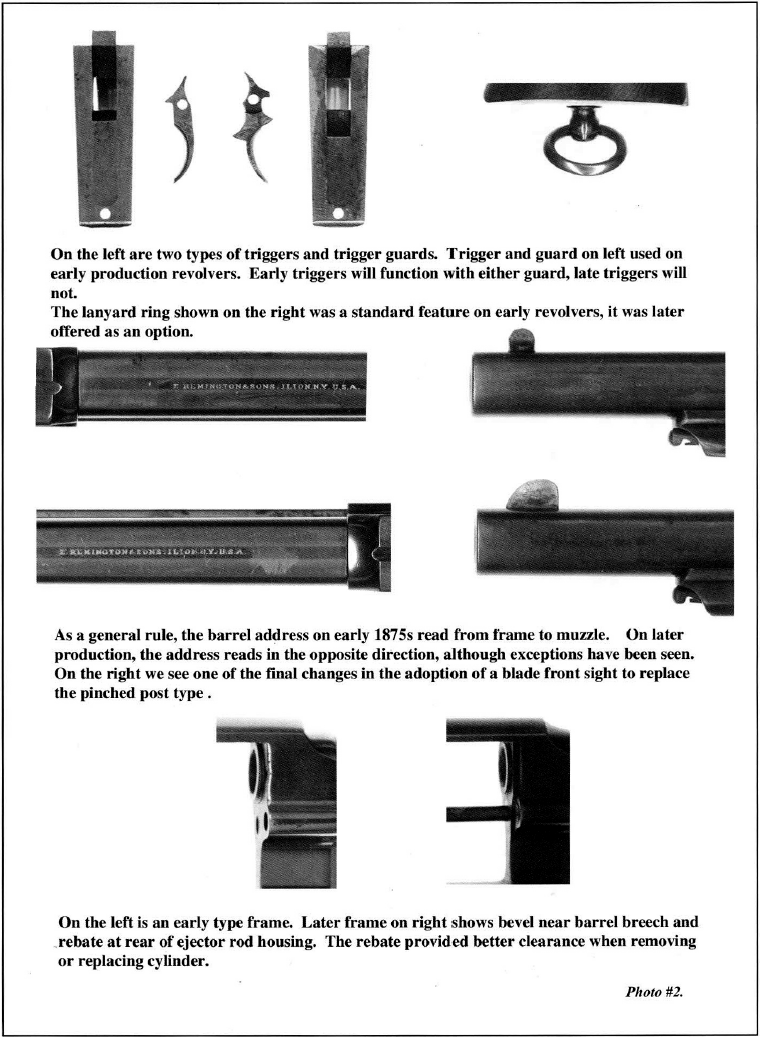
| Page 21 | 1st Quarter 2004 |
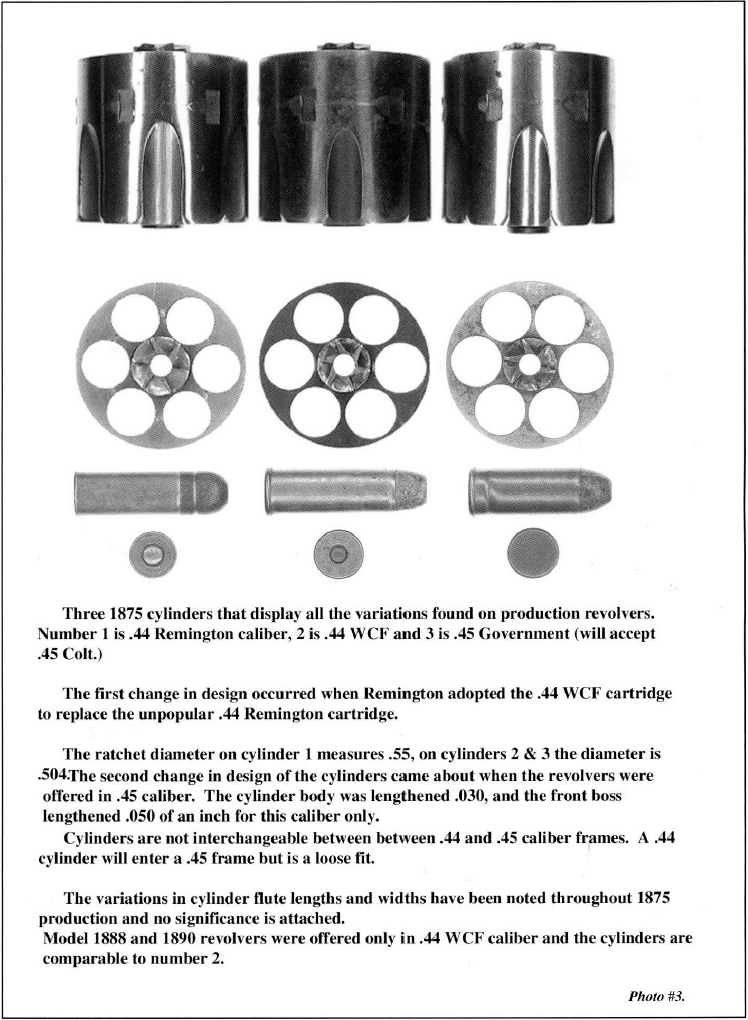
| Page 22 | 1st Quarter 2004 |

| Page 23 | 1st Quarter 2004 |
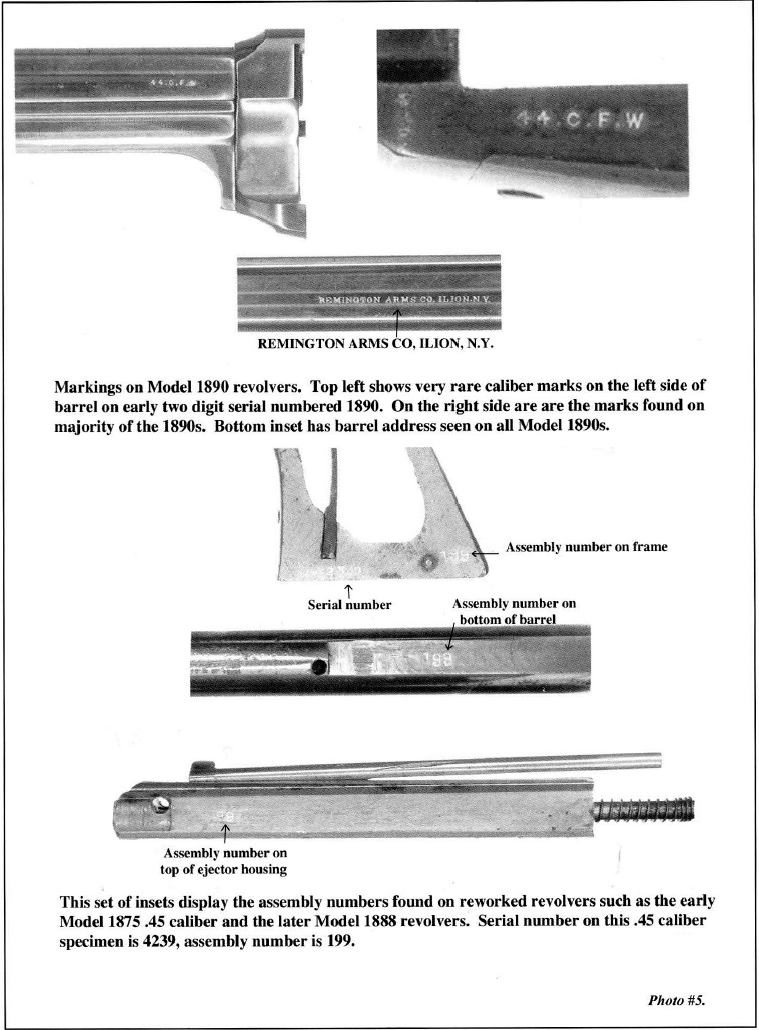
| Page 24 | 1st Quarter 2004 |
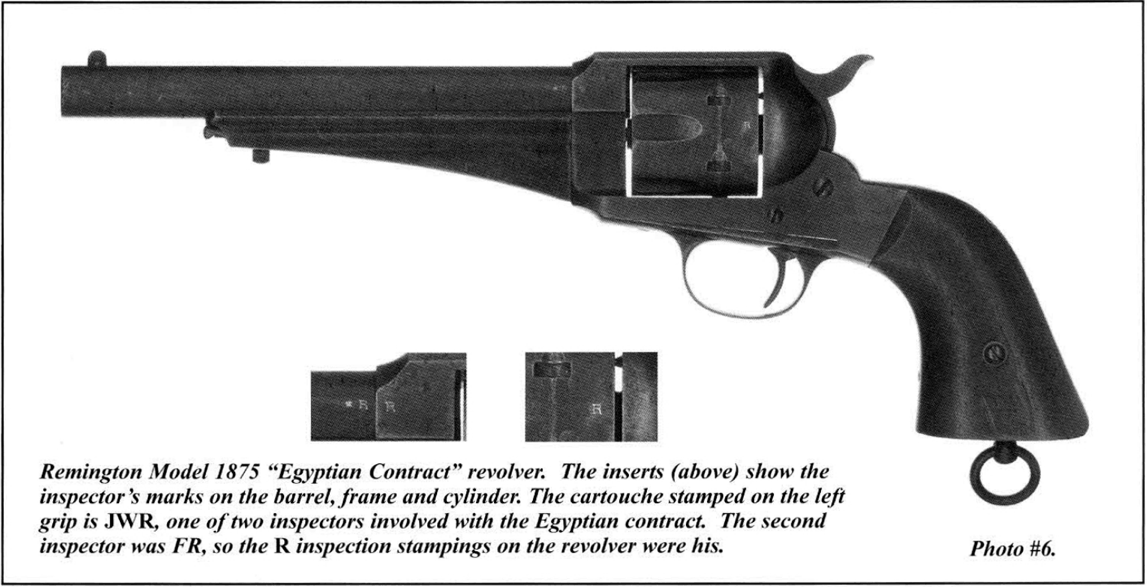
|
and this location was also used on early batch numbered revolvers. The frame location was used until alter the adoption of the blade sight. The trigger guard location was in use in 1883, when revolvers were ordered by the U. S. Interior Department for use by the Indian police on reservations.
Photo #5 is also self explanatory, but some further discussion of serial numbers Seems warranted. I have a very early production revolver, serial number 36. The serial number appears on the frame, |
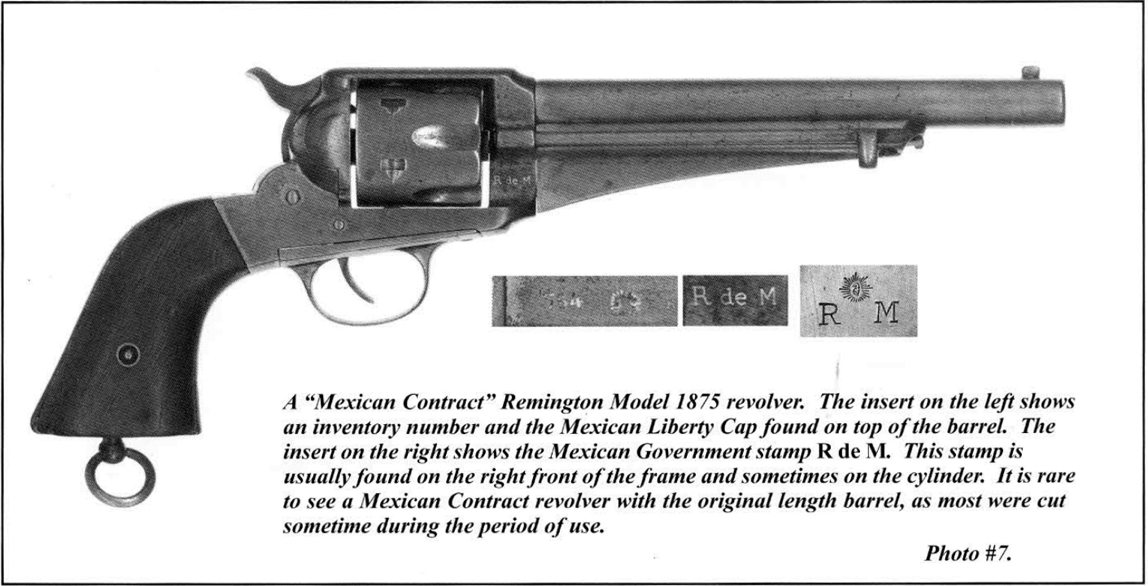
| Page 25 | 1st Quarter 2004 |
|
Photo #6 depicts an Egyptian contract revolver
Photo #7 shows a Mexican Government .45 caliber |
end. A new, slightly longer cylinder was made (see photo #3), and the forward end of the cylinder cavity in the frame was milled to accept the cylinder. The frame was beveled and the frame guide for the ejector rod was recessed as shown on photo #2. The ejector rod was also shortened slightly to conform to the new frame and cylinder dimensions. The new cylinders were stamped with an L on the face, which I surmise to stand for “long cylinder”. This contrasts with later production, most of which were Stamped with 45. When these revolvers were reworked by Remington, the major components were numbered during disassembly, to ensure that these parts were reassembled Correctly, and this number was usually also stamped on the face of the new cylinder. The caliber mark 45 was also stamped on the left grip of these revolvers, but one is seldom seen with this mark intact. Prolonged usage has almost always obliterated any trace of this stamp.
The number of revolvers ordered by the Mexican Government has never been determined (one confirmed |
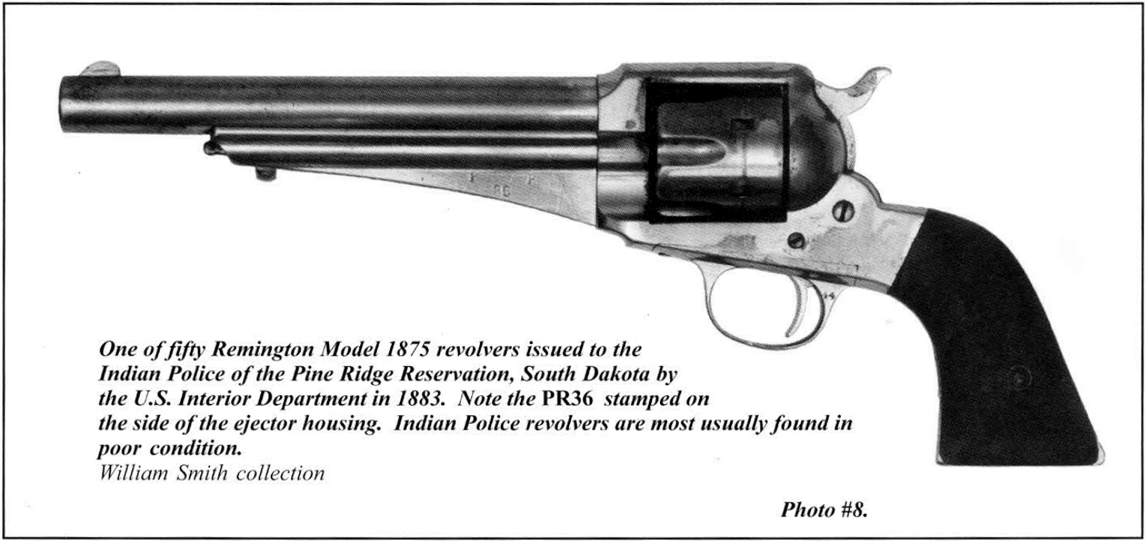
| Page 26 | 1st Quarter 2004 |
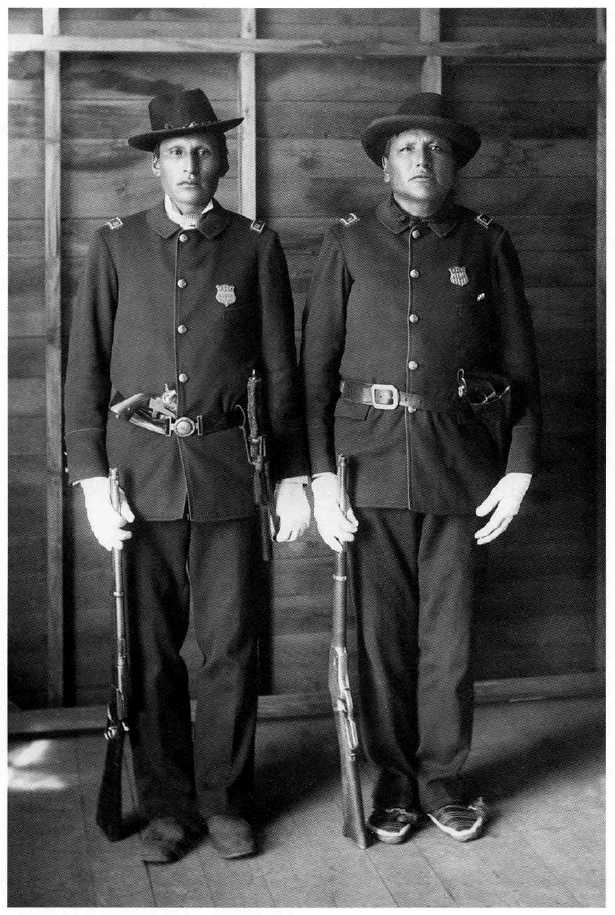
Although these revolvers all had a 7 -inch barrel |
Mexican Government revolvers
Photo shows a rare example
l have discussed only variations |
| Page 27 | 1st Quarter 2004 |
|
A few remarks about Remington’s production |
This essay is not intended to be the final word in
If the reader has, or is aware of any variations not |
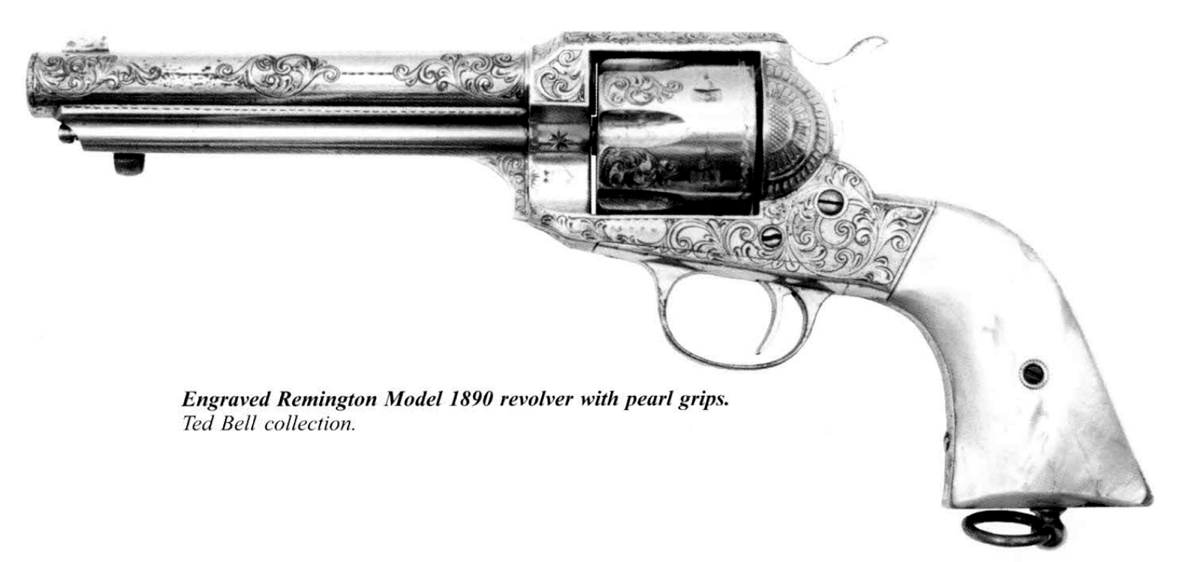
| Page 28 | 1st Quarter 2004 |
